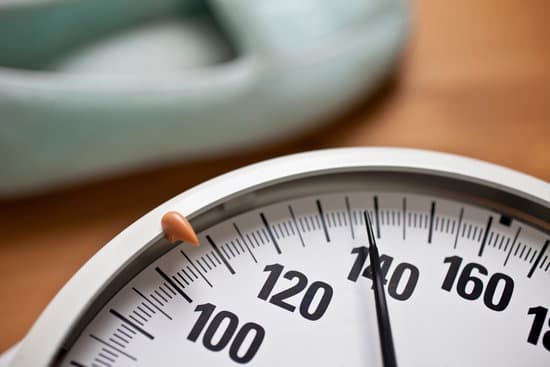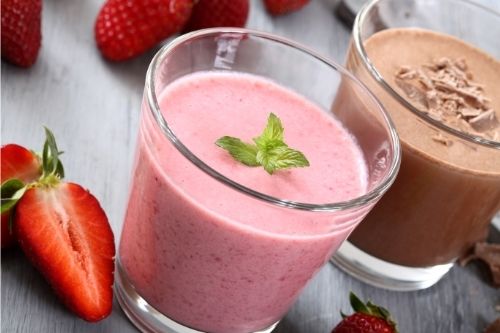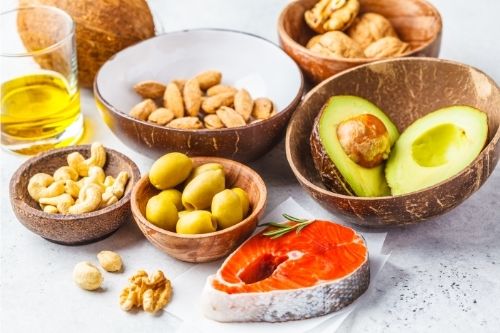
So the other day my wife is talking to her younger brother (let’s call him Slim). All of a sudden, she hands me the phone and says, “Slim wants to know how he can eat 6,000 calories a day.”
Let’s take a step back and put this in perspective. Slim is not a 300-pound, competitive strength athlete. I doubt he has ever weighed over 155 lbs., soaking wet. Now, to be fair, he’s around average height for a man in the USA, maybe an inch or two below average. And, at least through high school, he was a competitive athlete, in track and soccer. The point is, he is perfectly healthy and looks in shape, just thin. He is what I like to call “thin guy ripped”. He has abs and very noticeable musculature.
Slim is interested in putting on weight, possibly at the prodding of his well-intentioned wife. Now, this is somewhat humorous to me, but that’s mainly because I find my brother-in-law humorous.
From a medical perspective, clinical underweight is a serious issue. As much as my overweight clients may be envious of those who have difficulty gaining weight, gaining and maintaining adequate body weight for health is a legitimate struggle for a number of people. In some cases, this can result in serious physical and/or psychological consequences, including bone loss, poor immune function, and fertility problems. In many cases, even without severe medical consequences, inability to gain weight or maintain a normal body weight can cause mild to moderate stress, anxiety, or frustration. Many cases also carry moderate, but nonetheless unpleasant physical complications, such as trouble controlling body temperature, and discomfort from certain positions like sitting for prolonged periods.
If you are experiencing any of the above symptoms, I strongly recommend seeing your primary care medical provider, and ideally arranging for an individual consultation with a Registered Dietitian/Nutritionist (RDN). If instead you, much like Slim, are on the lower end of the normal bodyweight spectrum; have had difficulties gaining weight; fitting clothes comfortably; or generally maintaining a body weight as high as you wish, then I hope the following can help.
Many of us wish to change our body composition at one point or the other: for looks, for health, or for sport. So long as this is not taken to an obsession or extreme, gaining weight can be quite healthful, and improve overall quality of life. With that in mind, let’s cover the biggest tenets to follow when looking to gain some weight, but do so in a healthful and sustainable manner.
- In order to put on functional weight, which would be mainly muscle and bone, we need to be doing resistance training.
- A weight gain diet should still consist of primarily healthful foods.
- We need to find the best method for you to get more calories without feeling uncomfortable.
These concepts sound simple, right? Well, they are, but let’s add some detail so you can actually do them. For the majority of individuals, healthful weight gain means gaining mostly lean weight (from muscle, bone, and water) as opposed to mostly adipose tissue (or body fat). Unfortunately, there is no secret diet that will accomplish that goal. However, an appropriate diet and resistance training regimen in combination consistently leads to increases in lean weight.
But first…notes on Calories and Weight
Before I can feel comfortable talking about weight, I must issue to you, dear reader, the same thing I’ve needed to tell so very many well-intentioned people over the years.
Calories
A calorie is nothing more than a unit of energy. This is the main unit of energy we use to measure how much energy is stored within a food. To be more accurate, we mainly use kilocalories (a unit of 1000 calories). This is typically simplified to a capitalized Calorie to distinguish that it really means kilocalorie.
Calories are not magical in any way, and neither is gaining or losing body tissue.
Following from the basic laws of thermodynamics, since energy is neither created nor destroyed, eating more energy than is necessary to fuel the body’s activities will lead to storing energy within the body, and thus gaining more tissue. We may store this energy as muscle, bone, fat, or carbohydrate.
Please note that water does not contain energy, or Calories. So, while consuming water will change weight, it does not change the amount of energy stored in the body’s tissues. This is important to remember as we track weight.
Weight
Weight on the scale is not even close to a direct measure of body fat or body muscle.
Weight is not stable over the day. Fluctuations in weight up to 10 pounds over a day are completely normal dependent on body size.
Small changes in weight are very sensitive to hydration status and excretion. In other words, weight will change noticeably from urinating, defecating, drinking liquid, and eating food.
The scale can still be useful, though. It is not invasive compared to other methods of measuring body composition, and high quality scales are inexpensive to own.
Still, we need to attempt to control for some of the normal fluctuations in weight over a day. We do this by measuring weight only at a specific point in the day, and avoid comparing weights at different times of day to each other. The simplest time is typically immediately after waking and urinating.
When it comes to weight, you can weigh every day, but we should avoid focusing much on a single weigh in. Instead, we want to look at a trend over time of the average weights.
As an example, I wanted to put some weight on recently, moving up from my average weight of 180 lbs. So, I trained hard, ate a bit more, and weighed myself each morning after urinating. Let’s say these were my weights:
Monday: 180.0 lbs
Tuesday: 180.6 lbs
Wednesday:181.1 lbs
Thursday: 179.5 lbs
Friday: 180.4 lbs
Saturday: 181.0 lbs
Sunday: 180.7 lbs
Note how my weight dropped over a pound and a half from Wednesday to Thursday. That could mean I was messing up. Or, more likely, it means that I didn’t drink enough liquid Wednesday evening. Also, notice how the general trend was up, with the average weight for the week being 180.5 lbs. This tells me I am probably eating at a pace to gain 0.5 lbs body weight per week, a perfectly reasonable pace.

This is the type of mindset we want to take on with weight gain (or weight loss for that matter). We will focus on the trend over time, paying more attention to the average weight for a week than any one day, the average weight for a month over any one week, and the average weight for a year over any one month. Unfortunately, weight changes do not run in perfectly straight lines. But, with a little recordkeeping and some middle school math, we can get a clearer picture of our results.
Resistance Training
As much as I love strength training, I am not biased on the importance of resistance training to gain healthful weight.
A number of fantastic researchers on resistance training put out high quality content through various platforms online, so rather than belabor my interpretation of the literature, I recommend reading essentially anything by Dr. Eric Helms of 3DMJ, Greg Knuckols and Dr. Eric Trexler of Stronger by Science, Drs. Jordan Feigenbaum and Austin Baraki of Barbell Medicine, Jeff Nippard of jeffnippard.com, Dr. Layne Norton of BioLayne, Daniel Vadnal of FitnessFAQs, Dr. Mike Israetel of Renaissance Periodization, and James Krieger of weightology.net. There are even more great people in this space, so apologies to anyone who was left off.
In short, an effective resistance training plan includes at least two days per week working all major muscle groups, using rep ranges mainly from 5-30 repetitions per set, and between 10 and 20 working sets per week per major muscle group. These working sets would be performed at an intensity that is highly challenging, but not necessarily to muscle failure. The difficulty of the resistance training should be increased over time by increasing the intensity of the movement (like increasing weight used), increasing the number of repetitions at the same intensity, or increasing the number of sets at the same intensity.
So, there are many ways to accomplish a good resistance training plan in as few as two sessions per week. When it comes to choosing a resistance training plan, I recommend thinking about what equipment you have access to, what you prefer or enjoy the most, and what barriers may exist for any of these styles of training. There are pros and cons to the many methods to resistance training, so we should not be discouraged if we don’t have access to a full gym, nor should we feel like we must do any one specific exercise.
For our purposes, let’s separate the most popular and effective styles of resistance training into three groups.

- Bodyweight-based resistance. This includes a variety of classic calisthenics like pushups, dips, pull ups, rows, and lunges. As an athlete becomes stronger, exercise intensity increases by either adding repetitions or changing leverage, making controlling bodyweight more difficult. At that point, the athlete moves towards gymnastics strength movements like handstand pushup, front lever, planche, and single leg squat.
- Pros: Requires no more than a pull up bar or gymnastics rings, can be very fun to learn the skills involved, and can be faster to set up and move through a workout.
- Cons: Progress is more complicated, as you are forced to change the leverage of the exercise instead of just adding weight (like moving from pushups to diamond pushups), and ability to progress leg exercises is often limited by balance or flexibility more than strength.
- High quality resources online: https://www.reddit.com/r/bodyweightfitness/; https://labcoatfitness.com/

- Basic Strength or Powerlifting-style resistance. This includes an emphasis on a small selection of exercises that work most of the muscles in the body, performed at relatively high intensity. The athlete focuses mainly on the squat, bench press, and deadlift, likely incorporating some other basic barbell movements like row and overhead press. The athlete progresses by adding weight very regularly, and usually performs fewer repetitions per set than many other styles of training.
- Pros: Progress is fairly simple and straightforward, all exercises involve a large amount of muscle mass, so few exercises are necessary, and the exercises are relatively simple, so they can be safely learned in a short period of time.
- Cons: Requires access to a squat rack, barbell, bench, and weight plates. This style of training can be repetitive for some.
- High quality resources online: https://www.barbellmedicine.com/; https://www.strongerbyscience.com/

- Bodybuilding-style resistance. This includes an emphasis on stimulating specific muscles at relatively high volumes. The athlete focuses on stimulating muscle growth without excessive fatigue by challenging target muscles with a variety of exercises per muscle group, generally performed at more repetitions per set than powerlifting-style training. This style of training also tends to include more exercises that focus on only one muscle group, such as leg extensions for the quadriceps or curls for the biceps.
- Pros: Progress is still fairly simple, as weight or repetitions can be added. Many of the exercises are very simple to understand and execute with minimal instruction. The variety can be motivating for some athletes. Higher volume resistance training is the most effective for building muscle.
- Cons: Usually requires access to more equipment than the above styles of training, although “bodybuilding” style training can be mixed with bodyweight or powerlifter style training. The variety of exercises and repetition schemes may be confusing for a beginner to resistance training. This style of training is not as effective for building strength in the short term, and some argue that progress will stall unless the athlete gets stronger.
- High quality resources online: https://renaissanceperiodization.com/hypertrophy-training-guide-central-hub/; https://www.strongerbyscience.com/; https://3dmusclejourney.com/
So what to choose? Honestly, I recommend choosing whatever you think sounds interesting. I tend to bias toward basic strength for beginners to strength training, but I also love doing various bodyweight movements, and I include some “bodybuilder” work into my own strength training. Remember that after trying one style for a reasonable length of time, like 3 months, you can always try another. See what you like best.
The “best” or “optimal” training plan for you is one that you enjoy, but still challenges you.
If you have limited equipment, then the bodyweight route is probably a great place to start. There are quite a few free routines available for all these styles of training. I also have attached a routine I created for some friends during the lockdown, one requiring nothing but dumbbells and a bench, and one requiring only gymnastics rings.
Diet
Ok, so we’ve covered the resistance training. Now, let’s talk food! When it comes to healthful foods, I wrote what I like to think of as a succinct article here – https://foodthoughtful.com/2020/09/25/eating-for-heart-health-and-reducing-cardiovascular-disease-risk/.
But we want to gain weight, so ultimately we will need more food. We may not need more food in terms of volume or weight, but we will need more energy, which we measure in Calories (kilocalories to be more accurate).
Let’s circle back to my brother-in-law. He put together his training plan, from a solid resource. To gain weight, that same resource was advocating eating 6,000 Calories a day. This resource, not to be named here, has a very popular and very high quality book on beginning a strength training regimen. As good as I find his book, I do not believe his nutrition advice is sound. We are not bulking up in order to hibernate for winter here.

To be fair, there are some individuals who will need 6,000 Calories per day to gain weight. Slim definitely does not need 6,000 Calories a day to gain weight. It is unlikely he needs 4,000 per day. Those extra Calories? Well, they don’t just turn Slim into Schwarzenegger. Generally, eating a very large amount of excess Calories does make a person gain weight faster, but also makes them put on much more body fat, and increases risks for chronic diseases, like heart disease, type 2 diabetes, hypertension, and sleep apnea.
So, to gain weight the healthful way, the recommendation is a fairly small amount of excess Calories compared to what would lead someone to maintain weight. So, the target then would be to figure out someone’s “maintenance” Calories, or the amount needed to maintain, not lose or gain weight. Then, we would eat an extra 200-700 Calories per day on top of that. This would translate to approximately 1-6 pounds of weight gain per month. Any more is excessively fast for the vast majority of people, and any slower can become very difficult to monitor.
I am guessing the immediate question then is, “Well, how do I figure out any of those things?” Glad you asked. There are several options that I will briefly cover and provide links to resources if you wish to explore the topic more.
1. Use a Total Daily Energy Expenditure calculator. This is the fastest answer you can get, and will be supplied by the magic of the internet. Here is a solid one: https://www.bodybuilding.com/fun/calculate-your-total-daily-energy-expenditure-tdee.html. Remember, however, this is only an estimate. People are different, and those individual differences are sometimes quite remarkable when played out in the real world. You can check how accurate this estimate is for you by tracking your diet over a few weeks, shooting for this Calorie intake, and checking the results on the scale.
2. Track your normal diet. I consider this the most practical. Start your dietary changes by eating what you find to be a comfortably filling diet (ideally composed of mostly the healthful foods referenced above). Additionally, you will need to track your weight. If your weight doesn’t change significantly, then we have found your maintenance Calories. If weight goes up, then you are eating more Calories than maintenance. If weight goes down, then you are eating fewer Calories than maintenance. Depending on how much weight we are gaining or losing, we can adjust Calories until we find the correct amount to gain weight at a healthful and comfortable pace. MyFitnessPal, Cronometer, and MacroFacgtor are all options to track what you are eating. MyFitnessPal and Cronometer are free, while MacroFactor is a paid subscription, although MacroFactor has more features specifically designed to aiding weight gain or loss. All can be found in your phone’s app store. (https://www.myfitnesspal.com/; https://cronometer.com/; https://www.strongerbyscience.com/macrofactor/)
3. Simply eat your normal diet without tracking. This is the least involved solution, and generally reserved for those who have been weight stable and eating a healthful diet for a lengthy period of time. Then, based on whether we are gaining, losing, or maintaining weight, we seek to add or remove foods throughout the day to achieve the desired weight gain. For example, an individual who enjoys their diet and has been weight stable for many weeks, may need as little as a few extra tablespoons of olive oil added during cooking to help gain weight. Of course, an entire meal may be a necessary or desired addition.
Once your maintenance Calorie intake is known, figuring out how to exceed this amount by 200-700 Calories is next on our list.
First, continue tracking your diet, but add between 200 and 700 Calories to your daily intake. Monitor your pace of weight gain over a few weeks, and adjust this calorie excess to match your desired pace of weight gain (fewer extra Calories for slower weight gain, more for faster). Some people will gain weight much easier than others, so do not be surprised if the weight comes very readily or if the weight requires multiple adjustments upwards to attain your desired outcome. Also, focus on whole, healthful foods to achieve that weight gain. While weight gain supplements can be useful, real food is generally more satisfying. With that in mind, do not be too attached to the concept of “clean” eating either. At a certain point, we all get full. So, to get enough Calories to gain weight, some may need more calorie-dense foods, and maybe indulge in some desserts or comfort foods. I am not giving out a license to kill a pint of Ben & Jerry’s every day. But, a bit of ice cream can help you get some of those extra Calories.

Alright, now we have a good Calorie target to gain weight at a good pace. But, we have a problem, it may be more food than we can comfortably eat, either because of time or physical fullness. Luckily, we can solve this problem. If you are having trouble eating enough, getting more Calories from liquids can help. Whole milk can be a significant help here. Smoothies, especially those with milk, fruit, fruit juice, and coconut can also carry lots of Calories. We can also simply cook with more oils to help get those extra calories. Two extra tablespoons of olive oil mixed into your vegetables will add about 240 Calories to your day, for example.

We may also choose foods that pack a lot of Calories into a smaller package, otherwise known as calorie-dense foods. Foods like nuts, seeds, peanut butter, avocado, coconut, and cheese all provide plenty of Calories in a small volume, and often can be added to up the Calories of various dishes. For example, a fresh salad with light oil is very low in calories, maybe only 200 Calories, but that same salad with half a medium avocado and two ounces of cheese now has well over 500 Calories. Similarly, an apple makes for a great snack, but an apple with 2 tbsp of peanut butter makes for a high Calorie one.
If necessary, we may get a bit loose with the Calories, and take our weight gain phase as a good time to enjoy a bit more of our favorite dessert. We may enjoy some richer savory foods, like some fattier cuts of meat and poultry. I do caution keeping some limits here, as excessive amounts of animal fat and sugar are associated with increased risks for heart disease, type 2 diabetes, and fatty liver disease.
It may be easier to add another small meal or snack. Moving from three or four meals/snacks to four, five, or six meals and snacks can allow some to take in more Calories without any unpleasant feelings of fullness. This may even come in the form of peri-workout nutrition (or food/drink before, during, and/or after exercise). You may benefit from having a protein shake or smoothie post workout, drinking a sports drink during the workout, or packing a banana to get some fuel before your workout. It is unlikely you would need all three. I will admit that I love to nibble on jelly beans between sets for my sugar fix during a workout.
But what about protein?
Protein is critical to healthful weight gain, but is simply not as important as adequate Calories. No matter how much protein is eaten, if total energy is less than what is needed to maintain weight, you will not gain weight.
That does not mean we should disregard protein. It simply means that eating extra steak does not immediately lead to muscle growth.
Target 1.6 grams of protein per kilogram of body weight per day (about 0.75 grams per pound) or more. Consider this a minimum threshold. Many Americans already eat protein at or near this level, and it does not require a substantial amount of extra portions of meats or supplements. Generally, this can be achieved readily by thinking about the dose and frequency each day. For example, a 110-pound person (50 kilograms) would require at least 80 grams of protein each day. A 176-pound person (80 kilograms) would require at least 128 grams of protein per day. A 220-pound person (100 kilograms) would require 160 grams of protein per day.
Each meal, 15 or more grams of protein is a general goal to strive for. To be more specific, the recommendation for a single meal or snack to increase muscle protein synthesis (aka building muscle) is approximately 0.25 grams of protein per kilogram body weight or higher. So again, for a 110-pound person (50 kilograms) this would be at least 12.5 grams for a single meal. For a 176-pound person (80 kilograms), more protein is necessary, but not much, at 20 grams per meal. For a 220-pound person (100 kilograms), 25 grams of protein or more would be necessary for a meal. The larger the person, the larger the dose per meal we need, just like the dose per day.
To put these protein doses in perspective, 3 oz. of cooked chicken breast has roughly 18-25 grams of protein, and two slices of whole wheat bread would have 4-10 grams of protein. So, even a fairly large adult (220 pounds, 100 kilograms) should be able to get enough protein from a small chicken sandwich to trigger muscle growth. A single serving cup of Greek yogurt typically contains 12 grams of protein, and ¼ cup of granola typically has 3 grams of protein. So, even a rather light snack can be enough protein to trigger muscle growth for a smaller person (110 pounds, 50 kilograms).
How about Fats and Carbs?
Excellent question, glad you asked. Short answer – they don’t matter enough to track outside of their contribution to total Calories.
Ultimately, we have a rather substantial amount of literature indicating that so long as energy (Calories) and protein are the same, the amount of energy coming from fats or carbs doesn’t impact changes in body composition enough to be relevant in the real world, if at all.
So, think of this as freedom of choice. Choose fats and carbs that are good for heart health, but choose the mix that allows you to feel better, more comfortable, and enjoy the diet more. Some find that large carbohydrate portions are easier for weight gain. Some prefer to eat more fats to get those extra calories. The choice is really yours. Feel confident that so long as Calories and protein are very similar, your results will be very similar, even as you experiment with more carbs or more fats.
In Closing
I must say again that if you are struggling to maintain a comfortable weight, even after multiple attempts to gain weight, please see your physician to discuss in greater detail. I would also recommend a Registered Dietitian/Nutritionist (RDN) as part of your care team to help gain weight. If you are unhappy with either, it is perfectly reasonable to request another opinion or evaluation from another provider. Sometimes, there are underlying medical issues that make weight gain very difficult, and they can be difficult to diagnose. Likewise, there are physicians and RDNs out there who are simply not right for you and your needs, for a variety of reasons.
Summary
Here’s the TL;DR version on gaining weight healthfully:
1. Lift yourself and/or outside things. Resistance training is critical, at least twice per week.
2. Track your weight, focusing on the trend and the average, not any one day. Pick a time of day to weigh yourself and only do it at that time.
3. Focus on eating foods that reduce your risk for chronic disease – lean proteins, fruits, vegetables, whole grains, dairy, legumes, and plant-based fats.
4. Depending on how your weight is trending, eat a bit more or less. The target is a relatively slow weight gain pace, 1-6 pounds per month.
5. You can track energy intake to make this a bit more precise. Consider a TDEE calculator online (https://www.bodybuilding.com/fun/calculate-your-total-daily-energy-expenditure-tdee.html) to get an idea of your maintenance energy intake and use a food tracker like MyFitnessPal, Cronometer, or MacroFactor (https://www.myfitnesspal.com/; https://cronometer.com/; https://www.strongerbyscience.com/macrofactor/) to hit that amount plus 200-700 Calories per day.
6. If you are struggling to eat enough, consider drinking more Calories from milk or smoothies. You can also add more oils during cooking, incorporate more calorie-dense foods, or even add an extra meal or snack. You may also add Calories in or around your exercise by eating something small before, during, or after exercise, or drinking a sports drink instead of water.
7. Be sure to eat high protein foods at least three times per day, targeting at least 1.6 grams per kilogram bodyweight per day (or 0.75 grams per pound per day).
8. Continue to monitor your weight gain progress, and tweak over time.
9. Rinse and repeat.
Thanks for reading.
Your Friendly Neighborhood Dietitian,
Kevan

Keep writing more valuable content
LikeLike
Thank you! We will try!
LikeLike